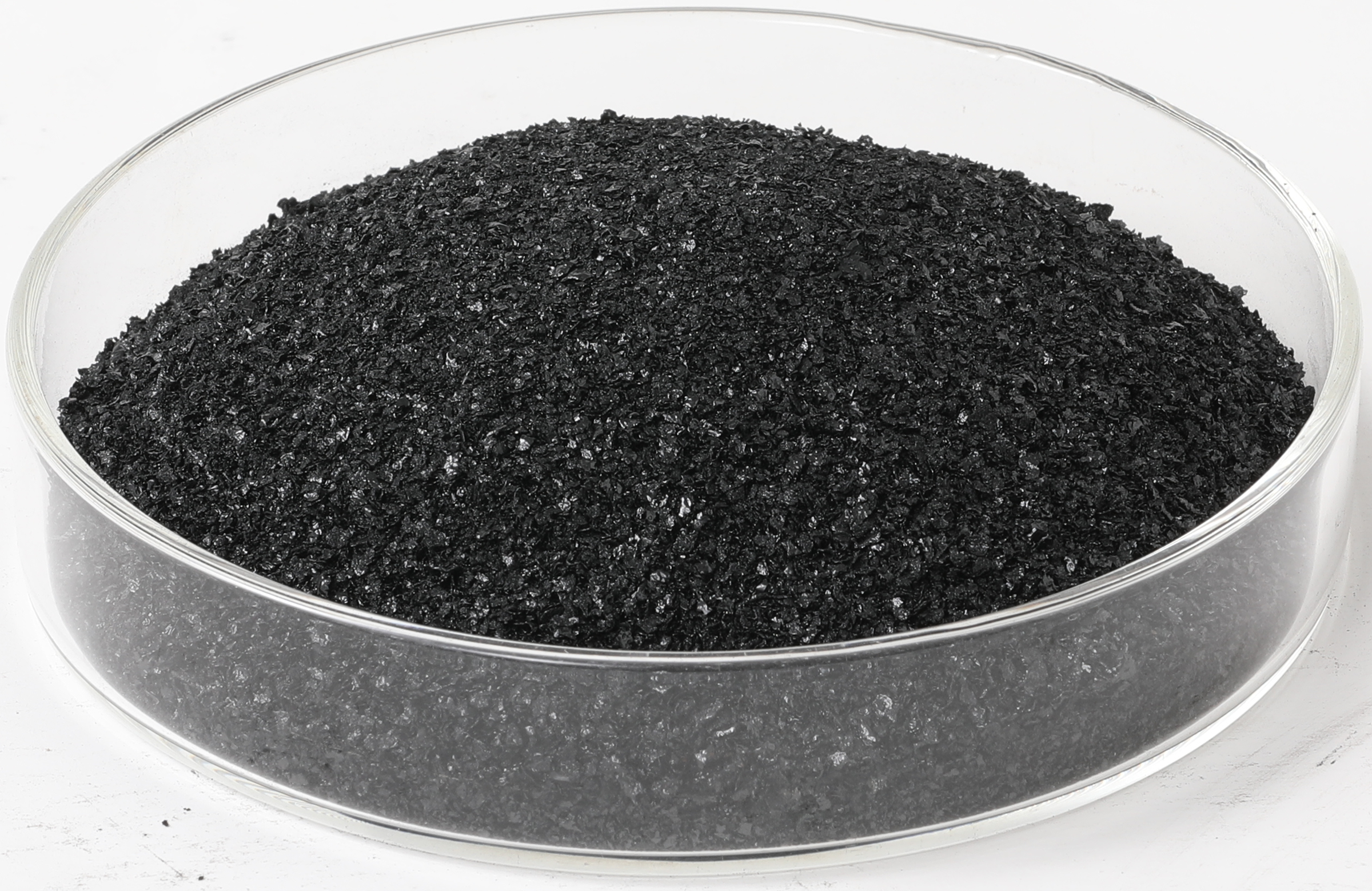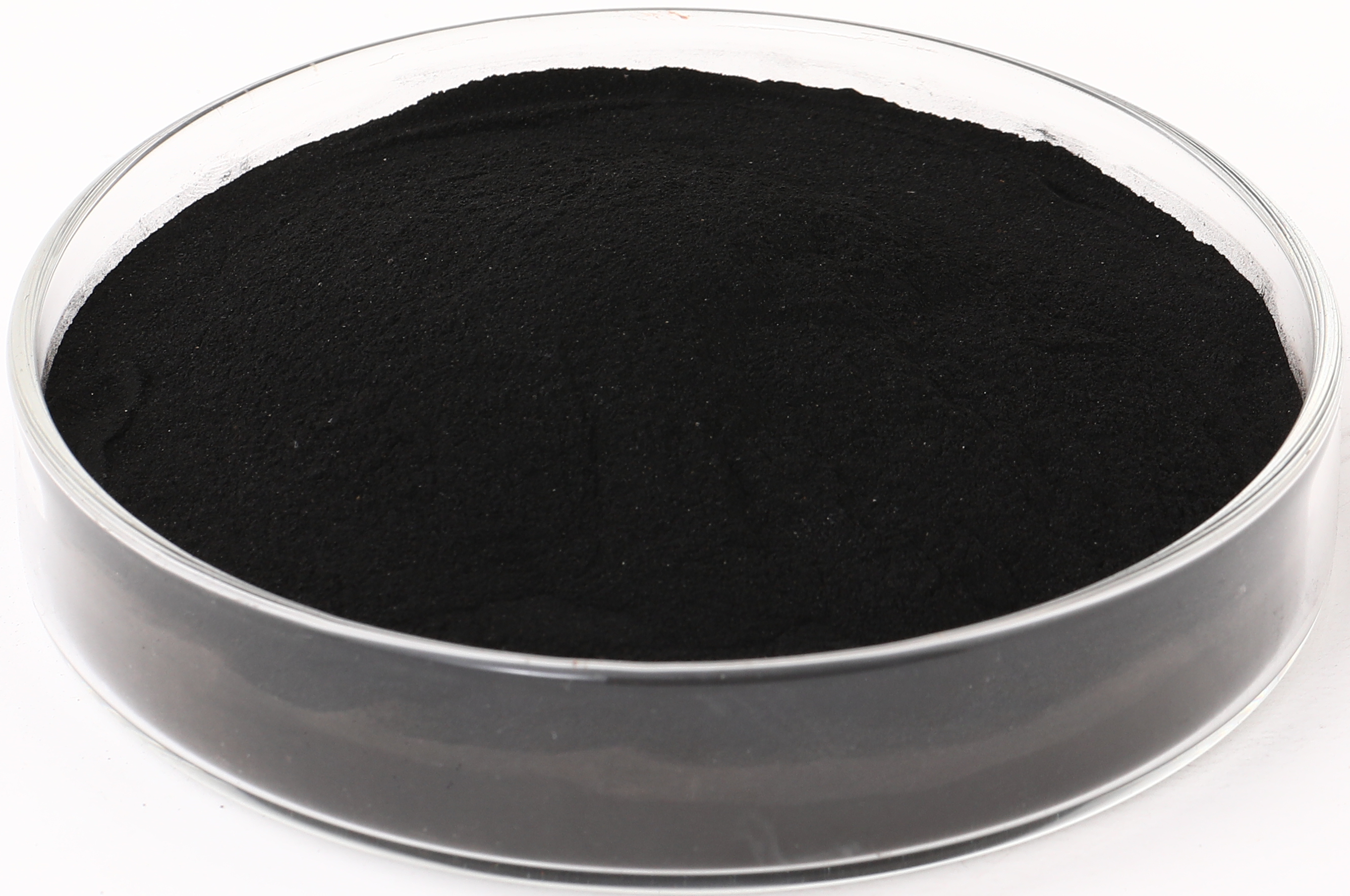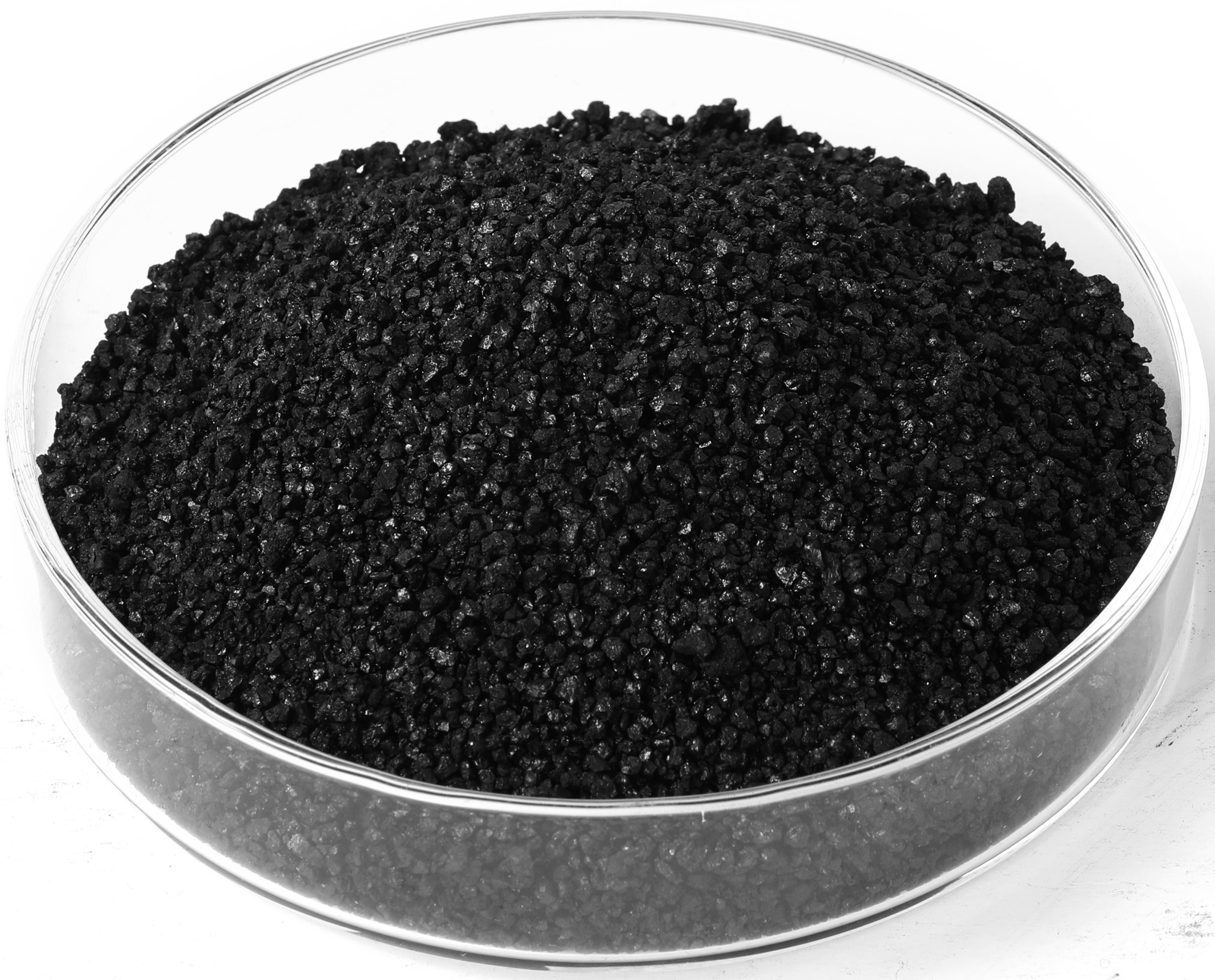The Role of Sodium Humate in Advancing Modern Agriculture and Industry

Innovative products help both farming and industry move forward. Sodium humate is special because it helps things grow better. It also helps the environment and works for many needs. Studies show sodium humate in animal food can make animals gain more weight. It can help animals grow up to 15% bigger. It also helps chickens use their food better. These good things make animals healthier and stronger. They also help farmers spend less money. Farms and factories want better and greener ways to work. Sodium humate gives real results that help them grow and do well for a long time.
Key Takeaways
Sodium humate makes soil better by adding organic stuff. It helps good microbes grow in the soil. It also cuts down on pollution. This makes plants stronger and crops grow better.
When sodium humate is put in animal feed, animals grow faster. They stay healthier and can digest food more easily. This means farmers do not need as many antibiotics.
In fish and shrimp farms, sodium humate keeps water clean. It helps fish and shrimp grow well. It also lowers bad things in the water. This makes farms get more fish and shrimp.
Factories use sodium humate to clean water. It helps make drilling safer. It also helps with making ceramics and dyeing things. This lets factories work cleaner and save money.
Sodium humate is safe if you use it the right way. It helps farms and factories be better for the earth. This makes it a good choice for the future.
Sodium Humate Overview

What Is It
Sodium humate is a salt that can dissolve in water. It is made from humic acids. These acids come from old plants and animals breaking down. Scientists change humic acids into sodium humate. This gives it special features. Experts use tools to look at its size and shape. They use things like gel permeation chromatography and electron microscopes. Sodium humate comes as flakes, granules, or powder. Each type has different sizes and uses.
Sodium humate can stick to heavy metals and make complexes. This helps soil and animals stay healthy. It also changes how nutrients move in soil and animals.
Key Features
It dissolves in water, so it is easy to use.
It has lots of humic acid and organic matter for soil and plants.
It comes as flakes, granules, or powder for many uses.
It helps plants use nutrients and keeps nitrogen from being lost.
It helps animals grow, fight sickness, and stay healthy.
The table below shows important features found in studies:
Key Performance Feature | Description of Effect | Statistical Significance |
|---|---|---|
Intestinal Microbiome Changes | More good bacteria and less bad bacteria | p < 0.05 |
Short-Chain Fatty Acids | More helpful fatty acids | p ≤ 0.05, p ≤ 0.01 |
Eggshell Quality | Stronger eggshells and fewer deposits | p ≤ 0.01, p ≤ 0.001 |
Sodium humate is a good choice for farms and factories. It helps them do better work.
Forms & Properties

Flake
The flake type of sodium humate is very pure and dissolves well. Makers create shiny black flakes that are 1-3mm in size. These flakes have at least 70% humic acid, so they are strong. They also have more than 85% organic matter, which helps soil and animals. The flakes can dissolve fully in water or feed. This means they mix in fast and do not leave bits behind. The moisture is always less than 15%. This keeps the flakes safe and dry when stored.
Specification | Details | Benefit |
|---|---|---|
Humic Acid Content | Minimum 70% | High activity for soil and feed |
Water Solubility | 100% | Fast and complete dissolution |
Particle Size | 1-3mm | Easy mixing and application |
Organic Matter | Above 85% | Supports plant and animal health |
Moisture Content | Max 15% | Stable storage |
Packaging | 25kg kraft bags, customizable | Flexible for different needs |
The flake type is good for animal feed, fish farms, and soil. It helps take away toxins and heavy metals. Its high humic acid helps animals and plants use nutrients better.
Granule
Granule sodium humate is helpful for farms and factories. The granules are 1-2mm or 2-4mm, so they are easy to use. They have at least 60% humic acid and 90% or more organic matter. They dissolve well in water, with over 95% solubility. The moisture is always under 18%, so they stay good.
Granules do not make dust, so they are safer and cleaner than powders.
They work well in drip and spray systems and do not block tools.
They are easy to store and move because they take up less space.
They come in 25kg kraft bags, and you can choose special packaging.
Granules are great for big farms, mixing with fertilizers, and factory use. They are steady and simple, so many people like them.
Powder
The powder type of sodium humate is good for special uses. It is a fine black powder, usually 80-100 mesh, and mixes easily in water. The humic acid can be from 20% to 70%. The organic matter is always at least 65%. It dissolves well in water, usually over 95%, but this can change with humic acid levels. The moisture is always less than 18%.
Powder is best for fast fertilizers and sprays for leaves.
It mixes well with other things for custom mixes.
It comes in 25kg kraft bags, and you can get special packaging.
Each type—flake, granule, and powder—has its own good points. This means sodium humate can be used in many ways, like helping soil, feeding animals, or cleaning water.
Sodium Humate in Agriculture
Soil Health
Good soil is important for farming. Farmers use sodium humate to make soil better in many ways. It adds more organic matter, so soil holds water and nutrients well. It helps good microbes grow, which makes soil life stronger. Sodium humate sticks to heavy metals and pollutants. This keeps them away from plants and lowers pollution. Farmers who use it need fewer chemical products. This helps with organic and green farming.
Sodium humate makes soil richer and stronger by adding organic matter.
It helps good soil microbes grow, so the soil is healthier.
The compound grabs heavy metals and pollutants, cleaning the soil and stopping pollution.
Using sodium humate means farmers use fewer chemicals, which is better for the earth.
It helps crops grow more by making soil healthier.
Sodium humate works with microplastics and makes compost better, so soil gets even healthier.
Tip: When soil is healthier, plants grow stronger and harvests are better. This makes sodium humate very helpful for farmers.
Crop Growth
Crops need good food and strong roots to grow well. Sodium humate helps crops take in nutrients better. It keeps nitrogen in the soil longer, so plants can use it. This product helps roots grow bigger, so plants get more water and minerals. Farmers see more crops and better food quality. Many farmers say their plants have stronger stems, greener leaves, and look more alike after using sodium humate.
Animal Feed
Farmers add sodium humate to animal food to help animals grow and stay healthy. Studies show calves grow faster and get sick less when they eat it. In one study, calves got 5 grams a day for 53 days. They grew better, had stronger immune systems, better gut bacteria, and less diarrhea. Pigs and chickens also grow more, lay more eggs, and get sick less with sodium humate. It helps animals digest food better, lowers bad bacteria, and cuts down on ammonia. These good things make it a safe choice instead of antibiotics.
Aquaculture
Fish and shrimp farmers use sodium humate to make water cleaner and animals healthier. It helps fish and shrimp grow faster and live longer. It also boosts enzymes that help them digest food and fight sickness. Water with sodium humate has less bad stuff like ammonia and more good microbes.
Performance Indicator | Effect of Sodium Humate Use in Aquaculture (Litopenaeus vannamei) |
|---|---|
Final Body Weight | Much higher than the group without sodium humate |
Specific Growth Rate (SGR) | Much higher than the group without sodium humate |
Feed Conversion Rate (FCR) | Much lower than the group without sodium humate |
Survival Rate | Higher than the group without sodium humate |
Intestinal Digestive Enzymes Activity | Amylase, Lipase, Trypsin work better |
Hepatopancreas Immune Enzymes Activity | SOD, PO, CAT work better |
Water Microbial Community Richness | More types of good microbes |
Ammonia Nitrogen Concentration in Water | Lower, so water is cleaner |
Note: Cleaner water and healthier animals help farmers earn more and keep fish and shrimp farms working well.
Industry Uses
Water Treatment
Many factories use sodium humate to help clean water. It grabs heavy metals and toxins, so they are easier to take out. This helps factories make less pollution and follow safety laws. Water plants add sodium humate to make water clearer and safer. It also helps stop bad smells and helps good bacteria grow. These things make sodium humate a smart pick for city and factory water systems.
Petroleum Drilling
Oil and gas workers use sodium humate when drilling. It keeps soil and rocks steady while they drill. This lowers the chance of things falling in and keeps drilling safe. Sodium humate makes a layer on the well walls to stop fluid from leaking out. This helps drilling go faster and saves money. Workers like it because it is simple to mix and use, which saves time.
Ceramics & Dyeing
People who make ceramics and do dyeing use sodium humate for many jobs. In ceramics, it helps clay move better and stops problems. It makes ceramics stronger and helps them handle heat. It also helps make greener products. The table below shows how it helps in ceramics:
Application Area | Benefit | Typical Dosage |
|---|---|---|
Grouting Mud | Makes mud flow better, stops shrinking | 0.125%-0.3% |
Molding Mud | Makes it stronger, dries faster | 0.15%-0.3% |
Glaze Paste | Changes thickness, mills faster | 0.01%-0.07% |
Gypsum Molds | Lasts longer, gets stronger | - |
Sagger Mud | Breaks less, dries faster | - |
In dyeing, sodium humate is a natural helper for paper, leather, and wood. It helps colors stick better and look nicer. It also helps companies make less waste and be more eco-friendly.
Mechanisms
In Soil & Plants
Humic substances help plants and soil in many ways. They make soil better and help plants grow strong. These actions also protect the environment. The table below explains how these things work:
Mechanism | Description |
|---|---|
Soil structure improvement | Makes soil hold water and air better, so roots grow well. |
Cation exchange capacity increase | Helps soil keep and swap nutrients, so fertilizer works better. |
Nutrient uptake enhancement | Makes roots grow more and take in more nutrients, so crops are bigger. |
Stress tolerance | Helps plants handle drought, salt, cold, and heat by making them stronger. |
Toxic metal binding | Grabs heavy metals and toxins, so plants are safer. |
Microbial interaction | Helps good soil microbes grow, so soil is healthier. |
Hormonal modulation | Changes plant hormones, so plants grow and develop better. |
Seed germination and stimulation | Makes seeds sprout faster and seedlings grow stronger. |
Environmental protection | Stops nitrogen from being lost, so the environment is safer. |
Animal health benefits | Makes animal guts healthier, so manure is better for soil. |
Scientists say humic substances come from things like soil, peat, and coal. They grab metals, make soil better, and help roots grow more hairs and branches. These substances also bring good bacteria. The bacteria break down old plants and animals. This makes minerals easier for plants to use. Sprays on leaves can act like plant hormones. They help cells grow and make food faster. It is important to use the right amount. Too much can slow plant growth.
Tip: Good soil and strong roots help farmers get more crops and healthier plants.
In Industrial Processes
Humic substances are important in many factory jobs. Scientists use special tools to see how they work with minerals. For example, in mineral flotation, humic substances stick to minerals. This helps separate valuable minerals from others. It makes the process work better for things like hematite and ilmenite.
Tests show humic substances change how minerals act, so they are easier to handle. They also help use fewer chemicals, which saves money and makes less waste. In water cleaning, these substances grab metals and toxins. This makes it easier to clean water. Factories can then follow safety rules and help the environment.
Note: Using humic substances in factories makes cleaner work, saves resources, and gives better products.
Safety & Environment
Handling
You need to be careful when using this product. It can react with metals and is active in the body. Scientists found it can go through skin and be swallowed. So, workers should not touch it with bare hands. They should wear gloves and special clothes. The product can mix with metals and change how they act in the body. Animal tests show it changes levels of selenium, manganese, and iron. This means people must handle and store it with care.
Always wear gloves and protective clothes when using it.
Keep it in a cool, dry place away from sunlight.
Wash your hands well after touching it.
Do not breathe in the dust or let it touch cuts.
Note: The product can help wounds heal and fights damage in the body, but you still need to be safe and avoid too much contact.
Environmental Impact
Humic substances help the environment in many ways. They make soil better by helping soil pieces stick together. This lets roots grow deeper and take in more food. The product holds onto nutrients, so less is lost. This means farmers use less fertilizer. It also helps good microbes live in the soil, which is important for healthy dirt. Studies show it works well with microplastics and pollution in rivers and films. When used right, it helps farms stay green and cuts down on pollution.
Makes soil healthier and helps it keep water.
Lets farmers use less chemical fertilizer.
Helps more good microbes live in the soil.
Balances soil pH and helps soil hold nutrients.
Benefit | Description |
|---|---|
Soil Structure | Soil sticks together and has more air |
Nutrient Retention | Less loss of nutrients, better fertilizer use |
Water Retention | Crops can live through dry times |
Environmental Safety | Less pollution and cleaner water |
Standards
Rules are in place to keep this product safe for farms and animals. The USDA says humic acids, like this one, are okay for organic crops. Experts checked and agreed it is safe to use. The FDA says it is safe for animal feed if rules are followed. Companies must meet strict safety and quality rules. These rules help farms grow more food and protect the earth.
Future Trends
Research
Companies and scientists keep looking for new ways to make humate products better. They want these products to help plants, animals, and factories more. Many groups spend money to make products that work faster and are easier for living things to use. Working with farmers and plant experts helps them find answers for special crops and animals. Being eco-friendly is very important. Teams try to make cleaner products that use less power, make less trash, and cause less pollution.
Companies spend money to make new products for farms and factories.
Working with farmers and experts helps make special products.
Eco-friendly projects try to make cleaner and better products.
New studies show humate products can help in mining. For example, scientists learned these products help separate minerals like fluorite and calcite. Tests show humate and tannin stick better to calcite. This makes it easier to pull calcite away from fluorite. This could help mining work better in the future.
Market Growth
The market for humate products keeps getting bigger. More people want them for organic farming, green farming, and cleaning water. The Asia-Pacific area is growing the fastest because farming and factories are growing there. Animal feed also makes more people want these products. Companies find new chances by using digital tools and smart machines.
Metric | Details |
|---|---|
Market Size 2024 | |
Forecast Market Size 2030 | USD 43 million |
CAGR (2025-2030) | 3.8% |
Market Size 2023 | |
Projected Market Size 2028 | USD 600 million |
CAGR (2023-2028) | 8% |
Fastest Growing Region | Asia-Pacific |
Key Growth Drivers | Organic farming, sustainable practices, water treatment, livestock feed |
The market grows fastest for animal feed and farming.
Asia-Pacific grows quickly because of more farms and factories.
Companies have problems with getting materials and teaching people.
New trends are using digital tools and making new products.
Note: Humate products have a good future because research and demand keep going up.
Sodium humate is very helpful for farms and factories. Farmers get better soil and stronger plants. Animals are healthier when they eat food with it. Factories use sodium humate to clean water and make better things. It comes in many types, so people can use it in many ways. People who want good results and care about nature pick sodium humate. Scientists are finding new ways to use it in the future.
Makes soil and plants healthier 🌱
Helps animals grow and stay healthy 🐄
Lets factories work cleaner and better
FAQ
What is the main use of sodium humate in agriculture?
Sodium humate makes soil better and helps plants grow strong. Farmers use it to get more crops. It also helps good microbes live in the soil.
Can sodium humate be used in animal feed?
Yes, sodium humate can be added to animal food. It helps animals digest their food better. It also helps their immune systems work well. Farmers see animals grow better and stay healthier.
How does sodium humate help in water treatment?
Sodium humate grabs heavy metals and toxins in water. Water plants use it to make water cleaner and safer for people.
Is sodium humate safe for organic farming?
The USDA says humic acids, like sodium humate, are okay for organic farms. Farmers can use it to follow organic rules and help soil stay healthy.
